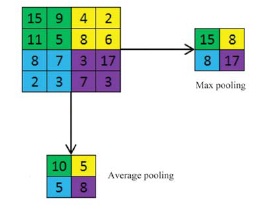Diagnosa Tumor Otak Berdasarkan Citra MRI (Magnetic Resonance Imaging)
Abstract
Brain tumors are one of the most deadly diseases, one of the most common types is glioma, about 6 out of 100,000 patients are glioma sufferers. Digital imagery through Magnetic Resonance Imaging (MRI) is one method to help doctors analyze and classify brain tumor types. However, manual classification requires a long time and has a high risk of errors, so an automatic and accurate method is needed to classify MRI images. Convolutional Neural Network (CNN) is one of the solutions for automatic classification in MRI images. CNN is a deep learning algorithm that has the ability to learn on its own from the previous case. And from the research that has been done, the results obtained that CNN is able to complete the classification of brain tumors with high accuracy. Accuracy enhancements are obtained by developing the CNN algorithm either by determining the kernel value and / or activation function.
Downloads
References
[2] L. Dirven, N. K. Aaronson, J. J. Heimans, and M. J. B. Taphoorn, “Health-related quality of life in high-grade glioma patients,” Chin. J. Cancer, vol. 33, no. 1, pp. 40–45, 2014.
[3] R. Riley, J. Murphy, and T. Higgins, “MRI imaging in pediatric appendicitis,” J. Pediatr. Surg. Case Reports, vol. 31, no. January, pp. 88–89, 2018.
[4] A. Pinto, V. Alves, and C. A. Silva, “Brain Tumor Segmentation using Convolutional Neural Networks in MRI Images,” IEEE Trans. Med. Imaging, vol. 35, no. 5, pp. 1240–1251, 2016.
[5] B. J. Erickson, P. Korfiatis, Z. Akkus, and T. L. Kline, “Machine Learning for Medical,” no. 1, pp. 505–515, 2017.
[6] J. Lee, S. Jun, Y. Cho, H. Lee, G. B. Kim, J. B. Seo, and N. Kim, “Deep Learning in Medical Imaging : General Overview,” vol. 18, no. 4, pp. 570–584, 2017.
[7] W. Rawat, “Deep Convolutional Neural Networks for Image Classification : A Comprehensive Review,” vol. 2449, pp. 2352–2449, 2017.
[8] G. Ö. Yiğit and B. M. Özyildirim, “Comparison of convolutional neural network models for food image classification,” vol. 1839, 2018.
[9] N. Sharma, V. Jain, and A. Mishra, “An Analysis of Convolutional Neural Networks for Image Classification,” Procedia Comput. Sci., vol. 132, no. Iccids, pp. 377–384, 2018.
[10] N. M. Balasooriya and R. D. Nawarathna, “A sophisticated convolutional neural network model for brain tumor classification,” 2017 IEEE Int. Conf. Ind. Inf. Syst., pp. 1–5, 2017.
[11] S. Hussain, S. M. Anwar, and M. Majid, “Brain Tumor Segmentation using Cascaded Deep Convolutional Neural Network,” 39th Annu. Int. Conf. IEEE Eng. Med. Biol. Soc., pp. 1998–2001, 2017.
[12] S. S. "Gawande and V. Mendre, “Brain tumor diagnosis using image processing: A survey,” “RTEICT 2017 - 2nd IEEE Int. Conf. Recent Trends Electron. Inf. Commun. Technol. Proceedings,” vol. 2018–Janua, pp. 0–4, 2018.


This work is licensed under a Creative Commons Attribution-NonCommercial-NoDerivatives 4.0 International License.

This work is licensed under a Creative Commons Attribution 4.0 International License




